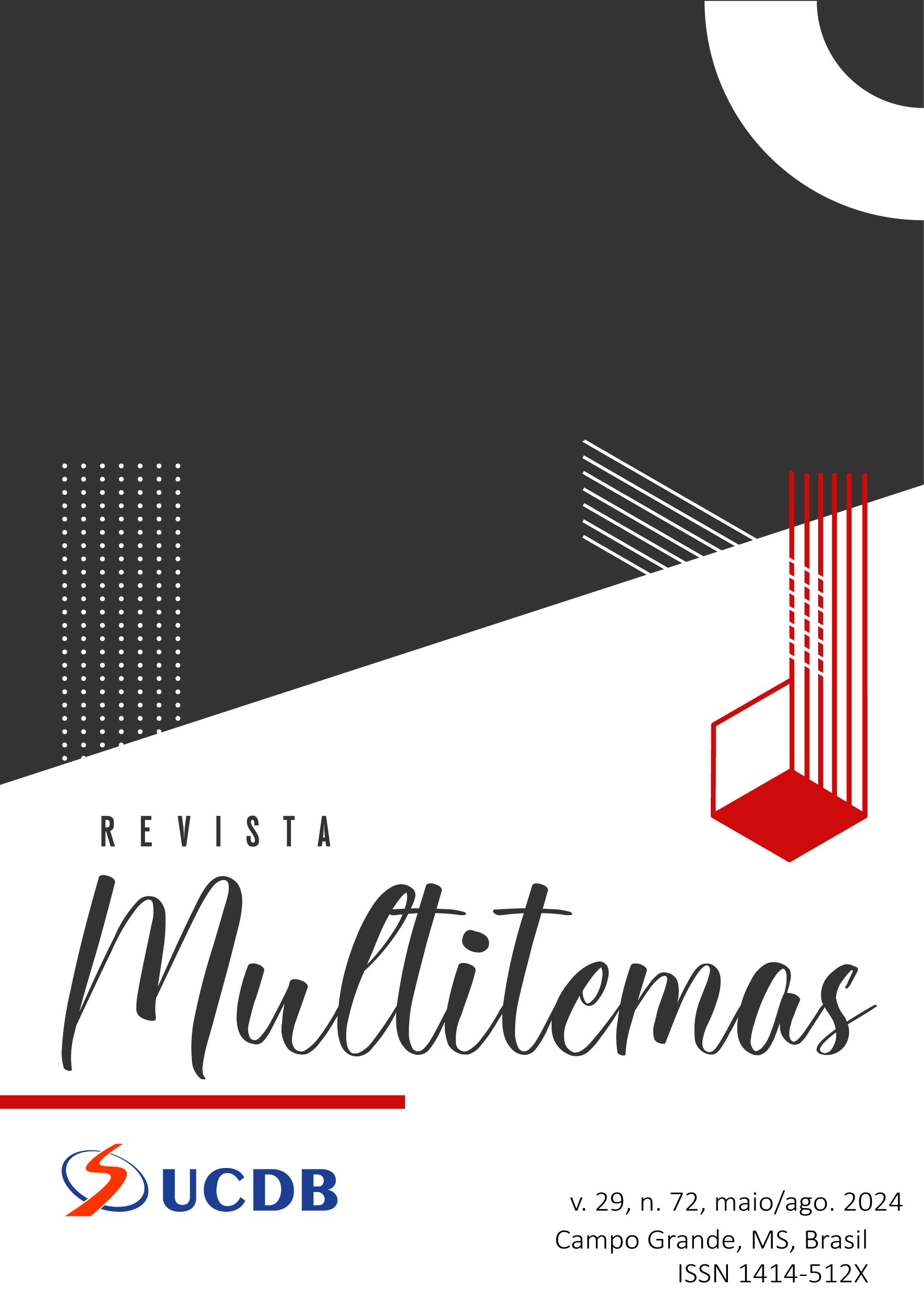From diagnosis to treatment: stigmas, challenges and reflections on obesity
DOI:
https://doi.org/10.20435/multi.v29i72.4253Keywords:
weight loss, BMI, feeding behavior, fatphobia, restrictive dietsAbstract
The issues involving obesity are multifactorial. The most common orientation about it is to encourage weight loss. However, the summary of this disease only to its biological aspects has not been effective. The objective of this work was to bring up a reflection about the obstacles that hinder the health care of people with obesity. This is a narrative and reflective review of propositions that do not relate solely to the biological point of view of obesity. A discussion was built about the stigmas that hinder the guarantee of health for fat people. It is noticed that the use of the BMI tool is not effective individually, being indicated the new percentage weight loss classification, referring to the history of greater weight. In addition, the recommendation is to discourage restrictive diets, provide guidance on eating behaviors, offer stigma-free support from healthcare professionals and ensure access to integral and humanized health.
References
ABESO. Diretrizes brasileiras de obesidade. 4. ed. São Paulo: ABESO, 2016.
ALVARENGA, M.; FIGUEIREDO, M.; TIMERMAN, F.; ANTONACCIO, C. Nutrição Comportamental. 2. ed. Barueri: Manole, 2019.
BLOMAIN, E. S.; DIRHAN, D. A.; VALENTINO, M. A.; KIM, G. W.; WALDMAN, Scott A. Mechanisms of weight regain x weight loss. ISRN Obesity, [s. l.], apr. 16, 2013.
BRASIL. Ministério da Saúde. Secretaria de Atenção à Saúde. Departamento de Atenção Básica. Guia alimentar para a população brasileira. 2. ed. Brasília, DF: Ministério da Saúde, 2014.
BRAY, G. A. et al. A ciência do controle da obesidade: uma declaração científica da sociedade endócrina. Endocrine Review, v. 39, n. 2, p. 79-132, apr. 2018.
CERVI, A.; FRANCESCHINI, S. C. C.; PRIORE, S. E. Análise crítica do uso do índice de massa corporal para idosos. Revista de Nutrição, Campinas, v. 18, n. 6, p. 765-75, dez. 2005.
DERAM, S. O peso das dietas. Rio de Janeiro: Sextante, 2018.
GARCIA, A. N. M.; ROMANI, S. A. M.; LIRA, P. I. C. Indicadores antropométricos na avaliação nutricional de idosos: um estudo comparativo. Revista de Nutrição, Campinas, v. 20, n. 4, 2007.
HAPERN, B. et al. Proposal of an obesity classifcation based on weight history: an offcial document by the SBEM and ABESO. Arc Endocrinol Metabol, 2022.
MONTANI, J. P.; SCHUTZ, Y.; DULLOO, A. G. Dieting and weight cycling as risk factors for cardiometabolic diseases: who is really at risk? Obesity Reviews, [s. l.], v. 16, p. 7-18, 2015.
MONTEIRO, C. A.; CONDE, W. L. A tendência secular da obesidade segundo estratos sociais: nordeste e sudeste do Brasil, 1975-1989-1997. Arquivos Brasileiros de Endocrinologia & Metabologia, [s. l.], v. 43, n. 3, 2009.
OBARA, A.; VIVOLO, S. R. G. F.; ALVARENGA, M. S. Preconceito relacionado ao peso na conduta nutricional: um estudo com estudantes de nutrição. Cadernos de Saúde Pública, Rio de Janeiro, v. 34, n. 8, 2018.
SAINSBURY, K.; EVANS, E. H.; PEDERSEN, S.; MARQUES, M. M.; TEIXEIRA, P. J.; LÄHTEENMÄKI, L.; STUBBS, R. J.; HEITMANN, B. L.; SNIEHOTTA, F. F. Attribution of weight regain to emotional reasons amongst European adults with overweight and obesity who regained weight following a weight loss attempt. Eating and Weight Disorders, [s. l.], v. 24, n. 2, p. 351-61, 2018.
WANDERLEY, E. N.; FERREIRA, V. A. Obesidade: uma perspectiva plural. Ciência & Saúde Coletiva, Rio de Janeiro, v. 15, n. 1, jan. 2010.
Downloads
Published
How to Cite
Issue
Section
License
Copyright (c) 2024 FELIPE CARLOS DE MACEDO OLIVEIRA

This work is licensed under a Creative Commons Attribution 4.0 International License.
Os artigos publicados na Revista Multitemas têm acesso aberto (Open Access) sob a licença Creative Commons Attribution, que permite uso, distribuição e reprodução em qualquer meio, sem restrições desde que o trabalho original seja corretamente citado.
Direitos Autorais para artigos publicados nesta revista são do autor, com direitos de primeira publicação para a revista. Em virtude de aparecerem nesta revista de acesso público, os artigos são de uso gratuito, com atribuições próprias, em aplicações educacionais e não-comerciais.


